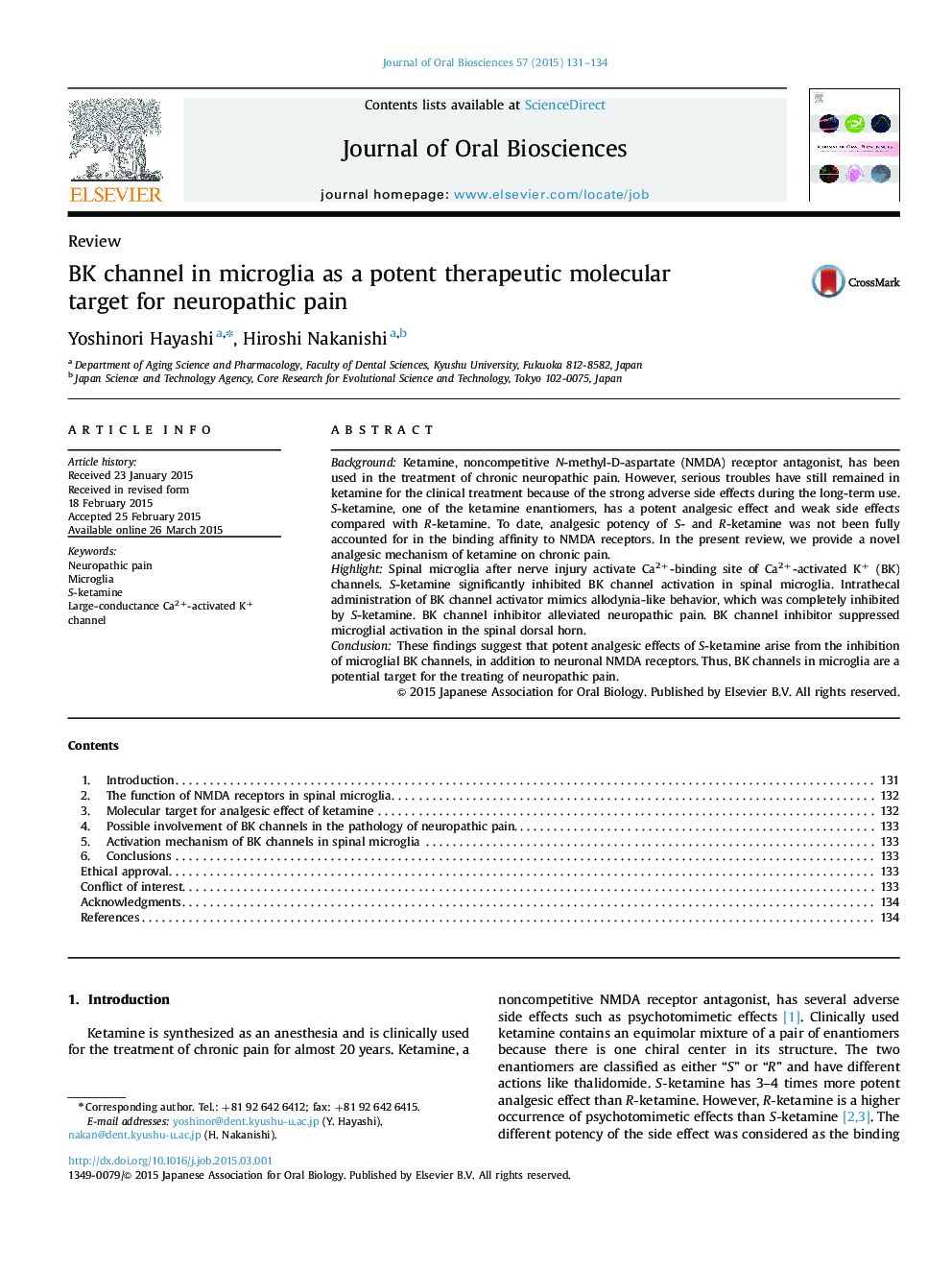| Article ID | Journal | Published Year | Pages | File Type |
|---|---|---|---|---|
| 2776781 | Journal of Oral Biosciences | 2015 | 4 Pages |
BackgroundKetamine, noncompetitive N-methyl-D-aspartate (NMDA) receptor antagonist, has been used in the treatment of chronic neuropathic pain. However, serious troubles have still remained in ketamine for the clinical treatment because of the strong adverse side effects during the long-term use. S-ketamine, one of the ketamine enantiomers, has a potent analgesic effect and weak side effects compared with R-ketamine. To date, analgesic potency of S- and R-ketamine was not been fully accounted for in the binding affinity to NMDA receptors. In the present review, we provide a novel analgesic mechanism of ketamine on chronic pain.HighlightSpinal microglia after nerve injury activate Ca2+-binding site of Ca2+-activated K+ (BK) channels. S-ketamine significantly inhibited BK channel activation in spinal microglia. Intrathecal administration of BK channel activator mimics allodynia-like behavior, which was completely inhibited by S-ketamine. BK channel inhibitor alleviated neuropathic pain. BK channel inhibitor suppressed microglial activation in the spinal dorsal horn.ConclusionThese findings suggest that potent analgesic effects of S-ketamine arise from the inhibition of microglial BK channels, in addition to neuronal NMDA receptors. Thus, BK channels in microglia are a potential target for the treating of neuropathic pain.
